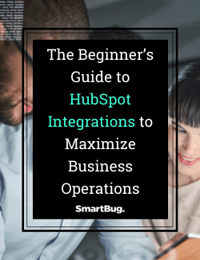
By Sarah Maher
HubSpot’s custom objects feature allows enterprise customers to extend their customer relationship management (CRM) platform to define objects outside of HubSpot’s standard objects. The new feature offers customization for defining a one-to-many relationship beyond the standard contacts, deals, companies, and tickets.
Currently, custom objects can only be created via an application programming interface (API) where a developer can identify the custom object and the associated standard object. Once created, you can begin benefitting from a variety of opportunities for integration and uses.
Workflows and Cross-Promoting
We’re all used to using standard objects in workflows, and luckily we can include custom objects, too. Whether associated with a contact, deal, or campaign, we can use this customized information to improve internal processes and even cross-promote.
Internal Processes
Spend less time on manual tasks such as referencing external spreadsheets for your customized accounts. For instance, financial companies might be tracking different account types and renewal information. In the past, your sales team may have had to track an account open date and renewal date elsewhere, but now they can easily store this as a custom object.
Take this account data a step further, and use the custom object in a workflow to notify a sales representative to follow up on renewing the account in 12 months. A renewal workflow based on these accounts will aid a sales team in increasing their account retention. Your sales team will thank you for the quick reminder that has appeared in their dashboard, rather than the tedious time spent referencing when their account opened.
Cross-Promoting
Everyone wants to expand the market reach for their product or services. Custom objects easily allow industries to define and track the products and offerings their consumers are interested in.
For example, a car dealership can keep a record when a customer purchases a white Ford truck. With this information, marketing can create a nurture campaign promoting their dealership’s monthly car-wash program.
Fortunately, all businesses can take advantage of storing multiple items. Instead of a car dealership, a financial company or real estate company might be interested in increasing their number of webinar attendees. These companies can track multiple opt-ins and trigger a workflow to target prospects for upcoming events.
When you’re ready to create a workflow based on your custom object:
-
- Navigate to Automation > Workflows.
- Create a workflow from scratch.
- Select the custom object.
- Set your enrollment criteria.
Reporting
HubSpot reporting is capable of creating both single objects and cross-object reports, empowering marketers with the knowledge of even more customized data on their prospects. A small disclaimer for cross-object reports: A record may be counted multiple times if it meets the displayed metric more than once.
Creating a custom object report offers a deeper understanding of your objects and activities. Users might be interested in using a marketing funnel presenting opt-ins throughout the processes. With a cross-object report, you can count the number of opt-ins it took an individual to take your desired action.
When you are ready to report on your custom object:
-
- Navigate to reports.
- Create a custom report.
- Report on a single object or cross-object.
- Select your custom object.
- Add a name to your report.
- Add properties and filters.
HubSpot Custom Objects: A Tool for Data Teams
Prior to the enhancement of HubSpot’s custom objects, data teams had to select a standard object to store data on and manually update from time to time. This takes up time in mapping, communicating with multiple teams to leverage the data, and sometimes introducing multiple APIs.
Now a team using both Salesforce and HubSpot, for instance, can easily translate their data from one CRM to the other. Your data in Salesforce can be created by an API developer as a new record in HubSpot, and easily integrated over according to the matched name. Once the initial API setup is complete, your data team will no longer have to waste time leveraging the data they need to be sent to HubSpot thanks to this seamless integration.
Marketers, developers, and even revenue teams can benefit and customize their HubSpot experience with custom objects. These are only a few integration scenarios, and as HubSpot continues developing and releasing enhancements the possibilities are endless. Check out our HubS pot Integrations Guide to learn more.
About the author
Sarah Maher was formerly a Marketing Specialist at SmartBug Media. Prior to SmartBug, she worked on an in-house marketing team in the vacation rental industry specializing in email marketing and content creation. In her spare time, she enjoys spending time at the beach and hiking with her dog. Read more articles by Sarah Maher.








-2.png?width=800&length=800&name=Blog%20header%20image%20(1)-2.png)